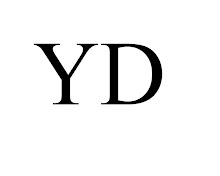
Throughout my experience with autistic piano students, I have had many lessons that consisted of one long and violent tantrum. This is usually where most piano teachers give up, especially those who don't have the training or experience to handle the tantrums correctly.
Piano lesson tantrums can be particularly frustrating when there is limited time and lessons are costly. The biggest mistake that parents and teachers can make is to give in to the tantrum just to calm the child down. Now, those who have been trained in ABA techniques understand that this only reinforces the tantrum behavior and will result in more tantrums down the road.
Here are some tips to prevent tantrums, redirect children when they happen during piano lessons and ensure that the behavior doesn't become common practice (which may lead the family and teacher to give up on piano lessons all together for the child).
Prevention:
1. Piano lessons should be scheduled at the same time every week and put on the student's visual calender so they can mentally prepare beforehand. Piano students with autism do much better when their lesson is strictly scheduled.
2. Choose a time in the day when the child is most alert but not restless for active play (like running around outside).
3. Make sure the student is not hungry or thirsty during the lesson. From my experience, this often results in the worst of tantrums, especially for non-verbal students.
4. Decide on a reward WITH the student. Perhaps they are not into M&M's at the moment and would rather be rewarded with 2 minutes of a fun DVD or hugs and tickles.
5. Use visual reward schedules and allow a few minutes of break time at ~10 minute intervals. Usually I have the student play 5-8 songs/activities and fill boxes with stickers until they reach their reward box.
Once a tantrum starts:
1. DON'T GIVE IN. Whatever you do, don't reward the student for the misbehavior. Instead try to first figure out what may be causing the tantrum. If there is something bothering them in the environment, try to remove that and redirect the student. If they WANT something, like food or reward...don't give them the item until they finish the task. Sometimes, tantrums are self-stimulatory, which basically means you can't really do anything for the student. However, you can't let the tantrum get its way.
2. Sometimes the student is seeking attention with the tantrum. Try your best to ignore the tantrum and not react. For example, if the student starts banging a door, don't yell or acknowledge what they are doing, but rather hold the door and look in another direction so that the student can't move the door. Parents are often trained by ABA therapists the proper procedure for this type of behavior, so follow their lead if you're a piano teacher that doesn't have experience with this type of behavior.
3. You may give the student a few minutes to calm down if you think that may help them, but don't end the lesson. After a few minutes, try to re-engage the student in an activity....it's best to try an activity they know how to do well and slowly ramp up the difficulty of the activity.
4. If you manage to get them back into piano lesson activity, praise them loudly and after a few tasks reward them with what they wanted as a reward.
There are obviously a lot more more things you can do. I encourage readers to comment and leave their own tips and techniques for dealing with tantrums during piano lessons.
-----------------------------
If you're looking for tutors (academic, music or art) that have training and experience in working with students who have autism, check out
Able Scholar.
Also, if you're looking for piano lessons in West LA, feel free to contact me or check out my local music website:
Brentwood Piano




